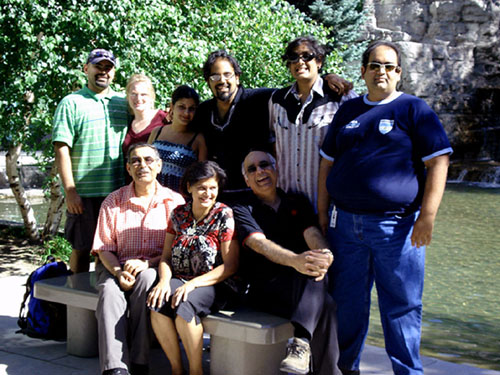Reproduced from VirtualMuseum Oftrinidadandtobago
 |
| An Indian vagrant in POS - 1910 |
People erroneously assume that upon expiration of their five-year indentureship contracts, coolie labour from India (1845-1917) was automatically handed five acres of land in lieu of a return passage to India as an incentive to stay in the colony. This is not true. The incentive only existed from 1860 and applied only to those who served a full term of the contract.
All incentives ceased in 1880 when it was determined that enough had settled in Trinidad to provide a permanent labour force. The Indian who saved from his pittance and bought out his contract received nothing.
He and those before 1860, were left to survive on what little they had saved from their wages ($2.50/month for an adult male, $1.75/month for a female, $0.75 for children up to 12). Neither did the incentive consist of land. It was simply five pounds in cash with which the majority purchased crown lands, which after 1870 were available for one pound per acre.
Naturally, there were those who for reasons of profligacy or ill-luck ended up as vagrants on the streets of Port of Spain. In 1904, it was estimated that as many 140 Indian vagrants slept in Port of Spain, most near Columbus Square.
Naturally, there were those who for reasons of profligacy or ill-luck ended up as vagrants on the streets of Port of Spain. In 1904, it was estimated that as many 140 Indian vagrants slept in Port of Spain, most near Columbus Square.
From 1849, an official known as the Protector of the Immigrants was appointed to oversee the general welfare of the immigrants, ensuring that they were treated fairly. Often enough, these bureaucrats were corrupt slackers, who took massive bribes from estate owners to not 'rock the boat'.
The only one who seems to have been a man of energy and conscience, was Charles Melville whose father, Henry Melville (and ironically enough, Protector of the Slaves before emancipation) had been a medical doctor and a man of great reputation in the colony.
Charles took a dangerous stance in taking his job seriously and arguing with the all-powerful sugar plantocracy for better rights for the Indians. Since the manager of Usine Ste. Madeline was more powerful than the Governor in those days, Melville soon suffered the fate of the conscientious civil servant and was axed.
Melville’s successor was Major Comins (1895-1910), an honest soldier and owner of Glenside Estate in Tunapuna. Comins had been an officer in India and was thought to have been the best fit for the job since he understood “the Indian Problem”/ Major Comins travelled extensively across the estates, inspecting barracks, and the dreadful living conditions of the Indians on the plantations.
His scathing report published in 1902, and revised in 1908 is an indictment on a labour system that was little better than slavery. He was particularly aggrieved over what he saw at Woodford Lodge Estate where Indians were worked longer than stipulated hours, kept on the estate by armed guards, left untreated at a filthy estate hospital and fed on scanty provisions .
It was however generally understood that as a planter himself, he sought the colonial interests and moderated his views to such an extent as to be a tool of the establishment and not in favour of those he was supposed to protect.
The last Protector of the Immigrants was Arnauld De Boissiere in 1927...a playboy and dandy who only held the office for the 400 pounds a year it paid.
The last Protector of the Immigrants was Arnauld De Boissiere in 1927...a playboy and dandy who only held the office for the 400 pounds a year it paid.
Indian vagrants were a lost people; they could not return to India, and even if they could, they would not have been better off. In Trinidad, they were alien, many spoke little or no English, and were considered less than human, both by the middle and upper class of society, the barrackyard dwellers, and the colonial authorities.
Most Indian vagrants survived as porters at sixpence a load. The main employers were marchandes (female vendors of edibles), and laundresses who would engage porters to carry the bundles of soiled clothing collected from the better homes in Woodbrook and St. Clair, returning the freshly ironed and starched pieces, neatly folded on a wooden tray, carried by an itinerant porter.
Some fortunate displaced Indians found accommodation at the Ariapita Asylum (known as the Poor House) until that facility was closed in 1929. Largely, most begged charity on the streets until death claimed them, their bodies being consigned to the earth of the Pauper's cemetery in St. James, opened in 1900.



No comments:
Post a Comment